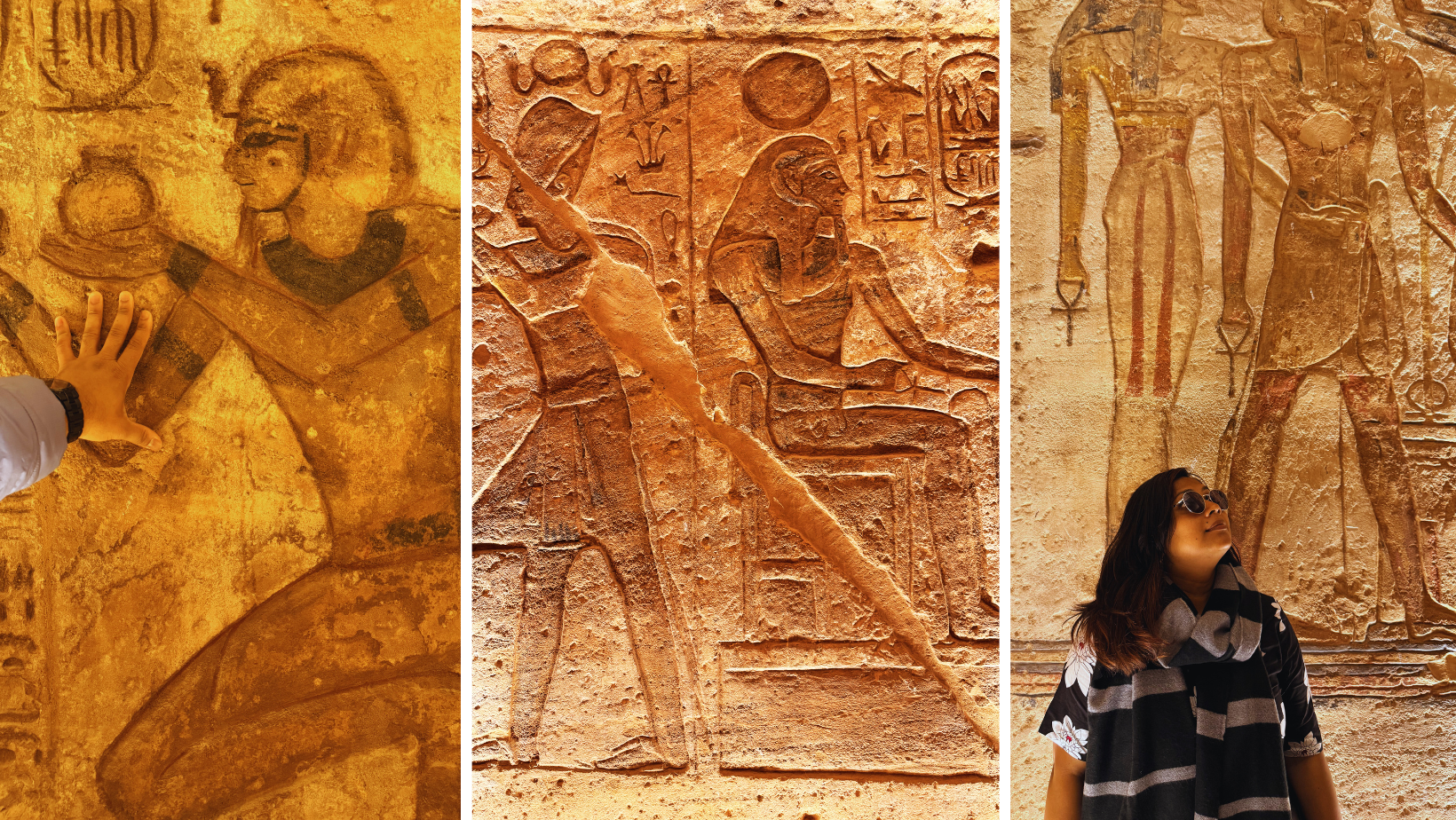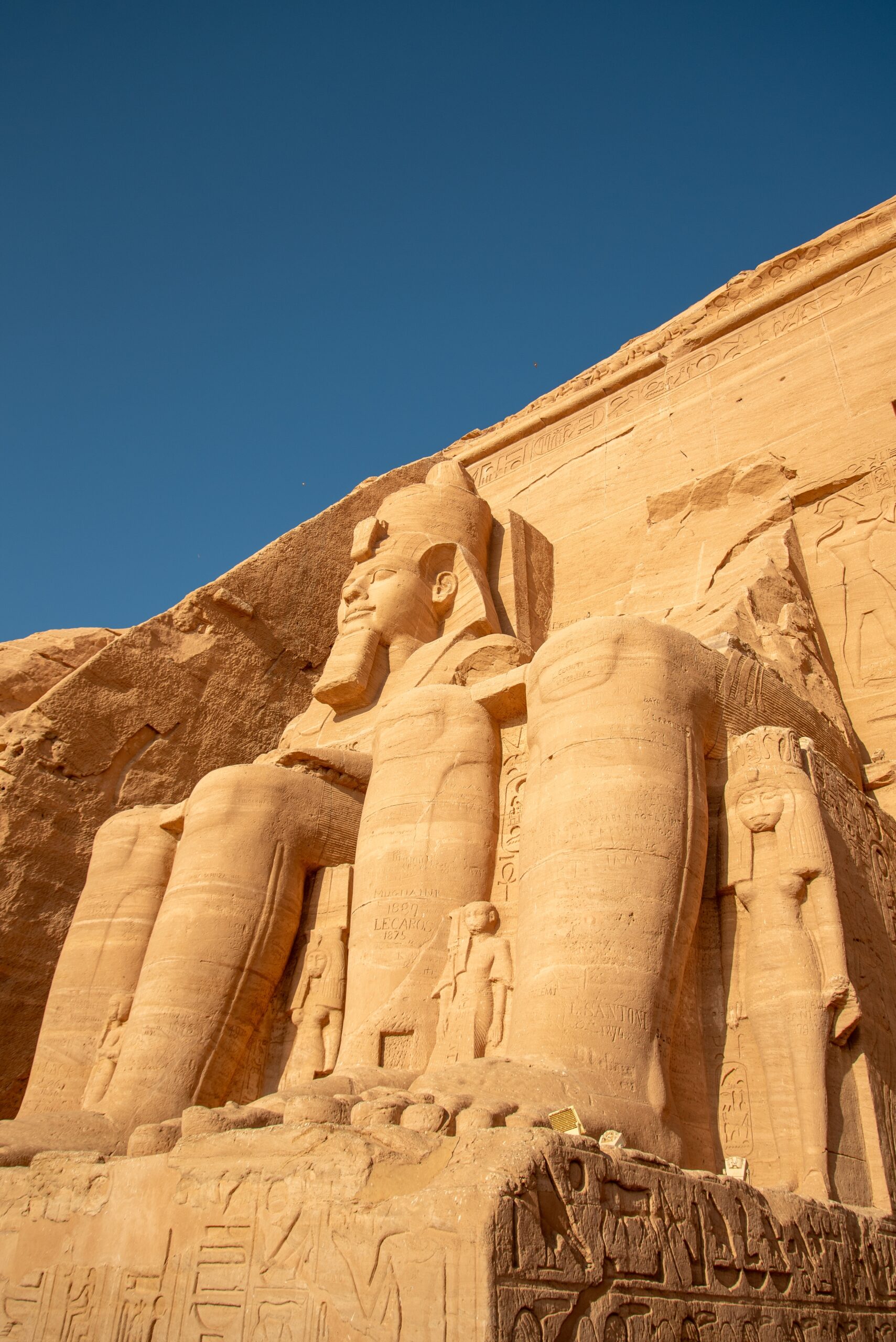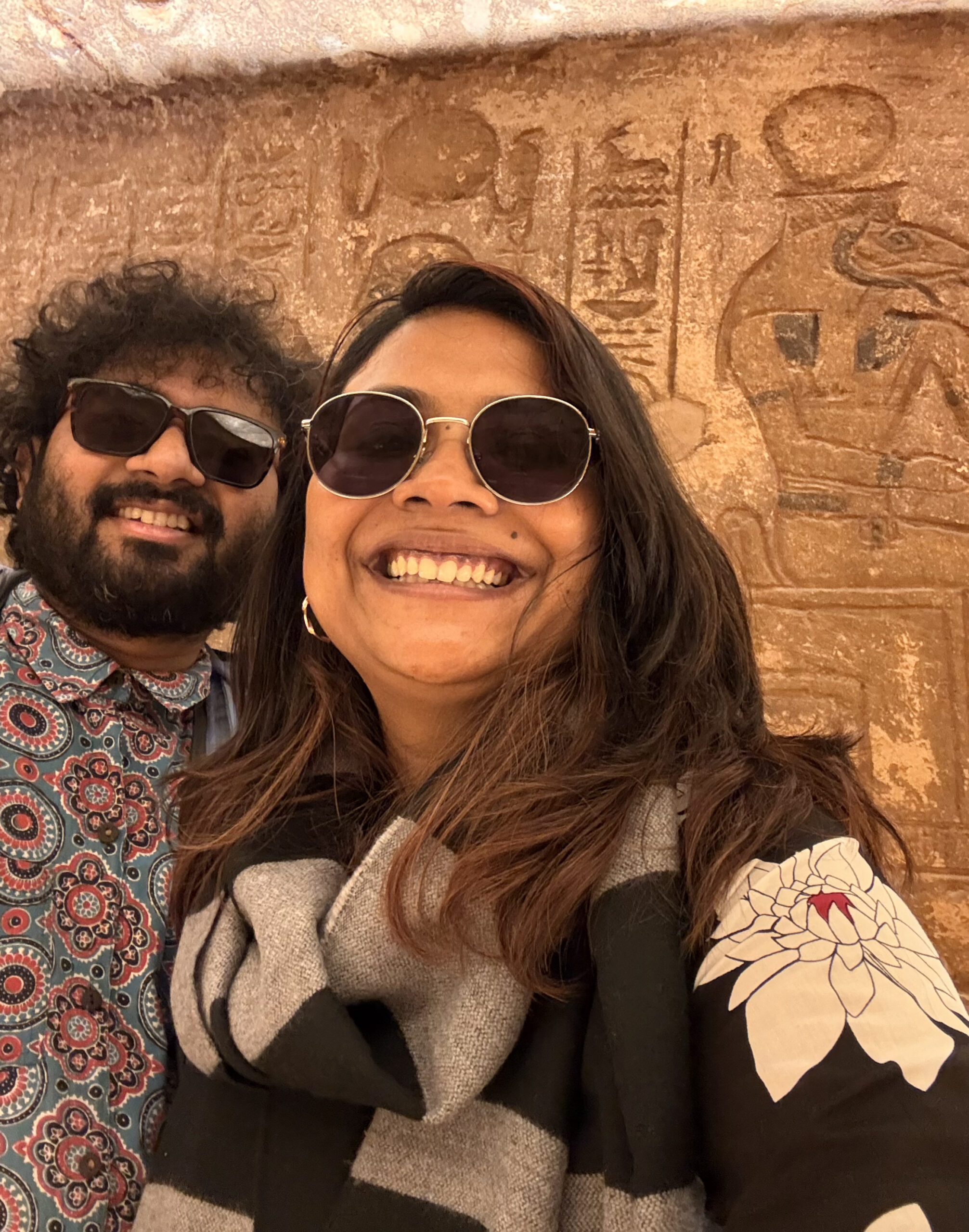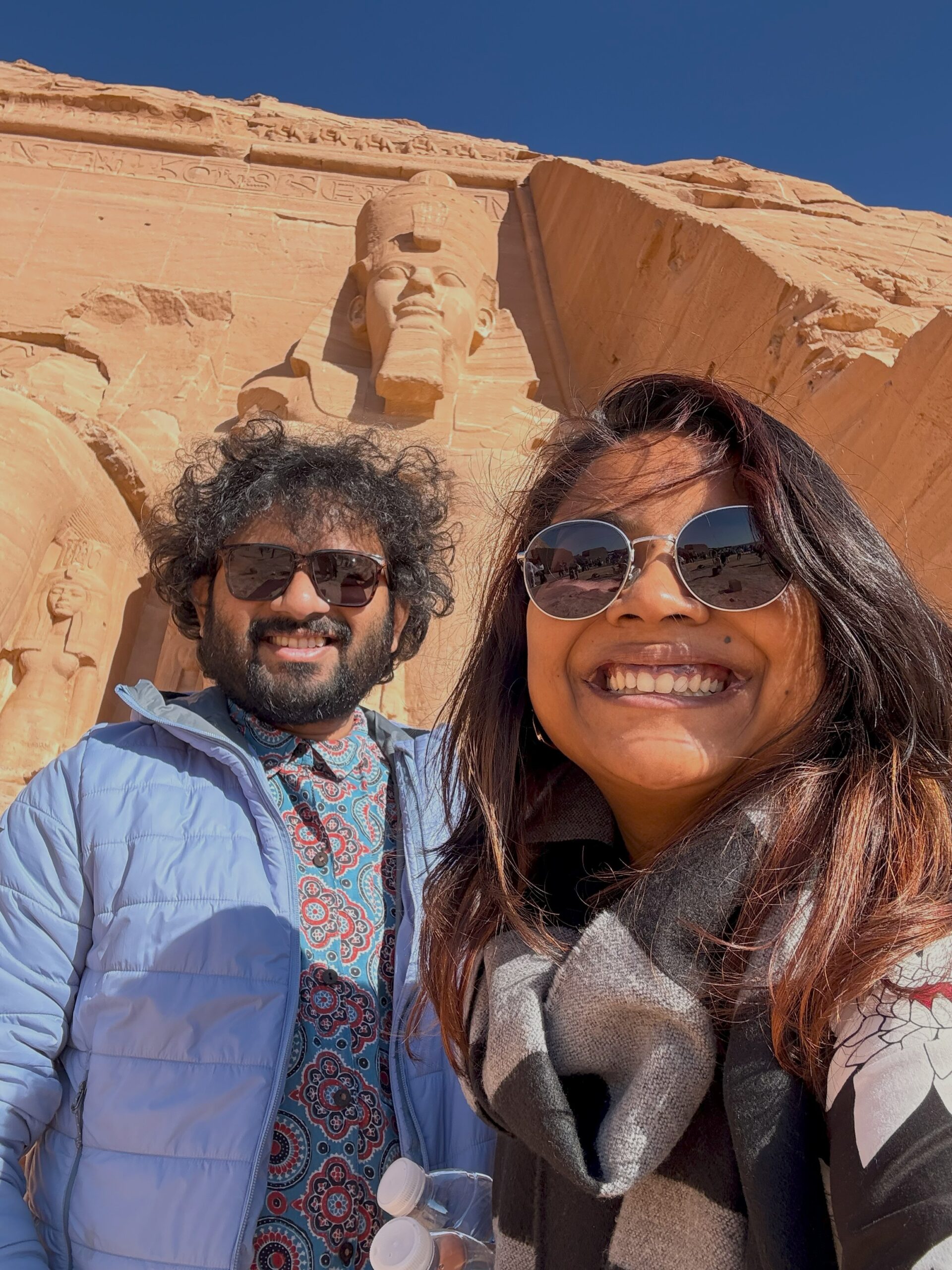Saved from the Rising Waters of Lake Nasser: A Modern Miracle
The story of Abu Simbel doesn’t end with its ancient past. In fact, one of the most incredible chapters in its history unfolded only in the last century. During the 1960s, Egypt embarked on an ambitious development project – the construction of the Aswan High Dam on the Nile River. While the dam promised irrigation, electricity, and flood control for millions, it also came with a cost. The creation of the vast artificial reservoir known as Lake Nasser meant that dozens of ancient Nubian monuments, including Abu Simbel, were at risk of being submerged forever.
(Lake Nasser is a vast artificial lake that stretches across southern Egypt and into northern Sudan. It was formed as a result of building the Aswan High Dam on the Nile River and ranks among the largest man-made reservoirs in the world.)
Abu Simbel, located just a few kilometres from the lake’s eventual edge, was among the most threatened. The temples, which had stood untouched for over three millennia, were suddenly facing the very real danger of being swallowed by water. The thought of losing these colossal monuments was heartbreaking, not just for Egypt but for the world.
That’s when the international community stepped in. In 1960, UNESCO launched one of the most ambitious archaeological rescue missions ever attempted. It became a global effort, with funding, expertise, and manpower contributed by more than 50 countries. Engineers, archaeologists, architects, and conservationists came together with a single goal—to save Abu Simbel from disappearing beneath the rising waters.
The rescue operation was nothing short of a modern engineering marvel. Between 1964 and 1968, the entire temple complex was carefully dismantled. Each structure was cut into blocks weighing up to 30 tons. In total, over 1,000 pieces were labelled, catalogued, and moved to a site located 65 meters higher and 200 meters back from the original location. The relocation site was designed to mirror the original layout, ensuring that the temples’ orientation, alignment, and sacred geometry remained intact.
To preserve the biannual solar alignment that lights up the inner sanctuary of the Great Temple, engineers had to be incredibly precise. Even a slight miscalculation could have altered the phenomenon. But they succeeded. The sun still pierces through the inner hall on the same two days, February 22 and October 22, just as it did thousands of years ago.
The temples were reconstructed with such care that unless you know their story, you wouldn’t suspect they had ever been moved. Artificial cliffs and mountains were built around the relocated site to replicate the original setting, making the transition from ancient to modern almost seamless.
Today, when you visit Abu Simbel, you’re not only witnessing one of Egypt’s greatest ancient wonders but also a testament to human cooperation, innovation, and the deep respect for heritage. The rescue of Abu Simbel stands as one of the greatest feats of archaeological preservation in history. It’s a powerful reminder that history is worth protecting and that sometimes, saving the past takes just as much courage and imagination as building the future.
If you’re planning your itinerary and looking for the best things to do in Aswan, a day trip to Abu Simbel from Aswan should be at the very top of your list. Few places in Egypt stir the soul quite like this.
Standing before the massive stone figures of Ramses II, I felt small in the best possible way. These weren’t just ancient structures, but they were stories frozen in stone, still echoing through time. The sheer scale, the stillness of the desert, and the craftsmanship that has survived thousands of years made me feel like I had stepped into a different era.
It’s one thing to see Abu Simbel in films or photographs. It’s quite another to walk through its towering gateways, run your hand across walls etched with scenes of gods and battles, and stand in the same spot where the rising sun touches the temple’s heart twice each year.
A day trip to Abu Simbel from Aswan isn’t just about checking off a famous landmark. It’s a journey across vast desert landscapes, into the depths of ancient imagination, and into the legacy of a king determined to be remembered. And when you’re finally there, witnessing it with your own eyes, you understand: Ramses II did more than just build temples. He carved himself into eternity.

Frequently Asked Questions About a Day Trip to Abu Simbel from Aswan
1. How far is Abu Simbel from Aswan?
Abu Simbel is located approximately 280 kilometres south of Aswan, near the Sudanese border. The journey takes around 3 to 3.5 hours by road.
2. Is a day trip to Abu Simbel from Aswan worth it?
Absolutely. Visiting Abu Simbel is one of the best things to do in Aswan. The temples are among the most impressive in Egypt, and the history behind their relocation makes the experience even more unforgettable.
3. What time do Abu Simbel tours usually start from Aswan?
Tours typically begin around 4:00 AM to ensure arrival at the site by 8:00 AM, when temperatures are cooler and crowds are smaller.
4. How much time do you need to explore Abu Simbel?
Most visits last around 2 to 3 hours, which is enough time to see both the Great Temple and the Small Temple and take in the surroundings.
5. Can I visit Abu Simbel without a tour?
Yes, it’s possible to hire a private car or driver from Aswan if you prefer to travel independently. However, going with a guide adds depth to the experience and ensures you don’t miss important historical context.
6. What should I wear on a trip to Abu Simbel?
Wear light, breathable clothing, a hat, sunglasses, and comfortable walking shoes. The site is exposed to direct sunlight, so sunscreen and water are essential. Also, carry your sunglasses!
7. Is there an entrance fee for Abu Simbel?
Yes, there is an entrance fee for the Abu Simbel Temples. As of 2025, the general admission ticket for foreign visitors costs approximately 300 EGP. Guided tours may be included in this price.
8. Are there restrooms and facilities at Abu Simbel?
Yes, there are basic facilities available, including restrooms and a small visitor centre. Some shops and cafes are located nearby as well.
9. When is the best time to visit Abu Simbel?
The best time to visit Abu Simbel is during the cooler months, from October to April. I visited in the month of December, and the weather was perfect. If you’re planning to witness the solar alignment phenomenon, time your visit for February 22 or October 22.
Disclaimer: This post contains a few affiliate links. If you happen to click on any of them and make a purchase, I might earn a small commission, at no extra cost to you. Just know that I truly appreciate your support if you choose to do so.




















